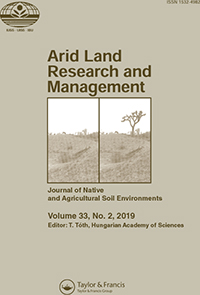Ver ítem
- xmlui.general.dspace_homeCentros Regionales y EEAsCentro Regional Patagonia NorteEEA BarilocheArtículos científicosxmlui.ArtifactBrowser.ItemViewer.trail
- Inicio
- Centros Regionales y EEAs
- Centro Regional Patagonia Norte
- EEA Bariloche
- Artículos científicos
- Ver ítem
Evidence on the response of Patagonian forage grasses to the mulching effect of recent tephra deposits in Argentina
Resumen
In Patagonia, arid and semiarid lands are being affected both by inappropriate management practices, which are leading to degradation, and by volcanic activity, whose effects are still unclear. This study aimed to test whether superficial deposition of volcanic tephra could benefit two of the most prominent Patagonian forage grass species (Poa ligularis and Pappostipa speciosa var. speciosa). Pots with P. ligularis and P. speciosa were kept under wet (W)
[ver mas...]
In Patagonia, arid and semiarid lands are being affected both by inappropriate management practices, which are leading to degradation, and by volcanic activity, whose effects are still unclear. This study aimed to test whether superficial deposition of volcanic tephra could benefit two of the most prominent Patagonian forage grass species (Poa ligularis and Pappostipa speciosa var. speciosa). Pots with P. ligularis and P. speciosa were kept under wet (W) and dry (D) conditions in the presence (T+) or absence (T−) of tephra for 105 days, and then were all well-watered. We determined the effects of tephra on soil water retention and conservation, soil moisture content (% v/v), plant growth, stomatal conductance (gs), and gs recovery capacity. The water regime significantly affected both species performance and gs. The presence of tephra increased soil water conservation, soil moisture content in wet conditions, and P. ligularis gs in wet conditions, and decreased senescence in dry conditions (9% in P. ligularis and 16% in P. speciosa). The presence of tephra allowed roots to grow in 8/10 and 2/10 pots in W conditions for P. ligularis and P. speciosa, respectively, and in only 1/10 pots in D conditions, only for P. ligularis. Tephra was also associated with gs recovery after dry conditions. Poa ligularis was more positively affected by tephra than P. speciosa, probably because P. ligularis has higher phenotypic plasticity. The positive effects of tephra may increase the resilience and resistance of P. speciosa and P. ligularis to periods of water shortage.
[Cerrar]

Fuente
Arid Land Research and Management 31 (4) : 373-387. (2017)
Fecha
2017-08-31
Editorial
Taylor & Francis
ISSN
1532-4982
1532-4990
1532-4990
Formato
pdf
Tipo de documento
artículo
Palabras Claves
Derechos de acceso
Restringido
 Excepto donde se diga explicitamente, este item se publica bajo la siguiente descripción: Creative Commons Attribution-NonCommercial-ShareAlike 2.5 Unported (CC BY-NC-SA 2.5)
Excepto donde se diga explicitamente, este item se publica bajo la siguiente descripción: Creative Commons Attribution-NonCommercial-ShareAlike 2.5 Unported (CC BY-NC-SA 2.5)

